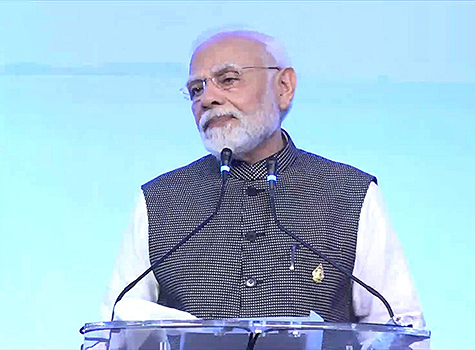What an election cycle it was! In 2016, the two candidates for President of the United States were considered as the two most disliked Presidential candidates in American History!
For the Democrats, it was Hillary Clinton, wife of the 42nd President of the United States, William (“Bill”) Jefferson Clinton. Clinton brought to table a strong resume that included a legal background, Former First Lady, Secretary of State, and Senator of the State of New York. Clinton’s main rival in the primaries was Bernie Sanders. In the primary phase of the campaign, Sanders had victories in several states and gave Clinton a “tough time,” but at the Democratic Convention it was indeed Clinton who sealed the Democratic nomination for the President of the United States when the Sanders supports jointed hands with the Clinton supporters.
For the Republicans, it was a pool of 17 candidates that included Senators, Governors and Presidential hopefuls from years past. However, the mix also contained a businessman named Donald Trump, who was a total “outsider” as it pertained to politics. He had never held office at any point in the past, and Trump’s campaign began suddenly June 2015 when he came down an escalator at Trump Tower in New York City wearing a bright red cap that said “Make America Great Again!” at which time he declared that he was running for President of the United States.
Over the course of the campaign, Trump did and said many things that would normally sink a candidate just like a boat anchor. However, Trump continued to persevere and he won many primaries. At the Republican Convention, many prominent Republicans including Former President George H. W. Bush, Former President George W. Bush, Mitt Romney and even John Kasich (the Governor of Ohio and one of Trump’s former rivals) did not attend even though the Republican convention was held in Cleveland! There was so much animosity between Trump and another former rival, Ted Cruz, that when Cruz spoke at the Convention, he stopped fully short of formally endorsing Trump and declared, “Vote with your conscience.” Nonetheless, despite all of this, Trump managed to secure the Republican nomination for President of the United States!
Once the primaries and conventions were complete, it was time to bring out the “boxing gloves” for the General Election. Controversies swirled around Clinton, especially regarding two major issues: 1) the private home e-mail server she used while she was Secretary of State and 2) her response to the attack on U.S. Government Facilities in Benghazi, Libya on 9/11/2012 in which several American lives were lost. This attack happened while Clinton was Secretary of State. On the other side of the aisle, Trump was acting more and more irrational, erratic and crass. Additionally, many of the crude comments that Trump made in years past surfaced during the campaign, and that definitely put him in a very bad light. Many Republicans in the House, Senate and the high-level Republicans I mentioned earlier indicated that they would not vote for Trump and it seemed all over for him at that point.
Despite the deep flaws of both candidates, Clinton led in all of the national polls and especially after Trump kept pulling one stunt after another, Clinton’s lead in the polls grew. But then the tides turned: 11 days before election day and in the midst of the early voting period in many states, the FBI Director came out with a statement indicating that the investigation into Clinton’s private e-mail server would be re-opened. This was a shell-shock just less then two weeks before the election and subsequently, two [2] days before election day, the FBI Director came out with another statement indicating that the investigation had been closed and no damaging evidence was found. This definitely hurt Clinton and her momentum and the timing of these announcements by the FBI Director brings many questions to mind. Despite this controversial item and its timing, the financial markets rallied and seemed to price in a victory by Clinton after the FBI Director closed the matter. Interestingly, the markets also had a very strong reaction when Donald Trump pulled out his stunning upset.
The pundits, pollsters and analysts got this one wrong in a major way. Clinton led in all the major polls and it seemed like she would sail to victory and break the “elusive” glass ceiling. Instead, the total outsider came into victory not by popular vote but through the Electoral College. The Electoral College contains 538 Electors and therefore, a majority of 270 Electoral Votes are required to win the election. Each state’s population determines its amount of “electoral votes” – the higher the population, the more votes a state has. Currently, the “Golden State” (California) has the highest number of electoral votes at 55!
Clinton actually attained nearly 3 million more popular votes than Donald Trump, yet she lost the election! This marks the fifth time in U.S. history that a presidential candidate has won the election without winning the popular vote (most recently: Bush vs. Gore, CY2000). Clinton carried the traditional big cities and urban areas; however, the rural and suburban areas were carried by Trump and that is how he carried 30 states and earned over 300 electoral votes vs. Clinton’s carrying 20 states plus the District of Columbia. In addition, the electorate was “fed up” of the “Establishment” (insiders and career politicians). Therefore, gravitation towards Trump on that basis was significant as well.
So as Americans, what do we do now? This election has been very divisive to the country as a whole and there are tremendous tensions in societies across America. The best thing that we as Americans can do is heal together, get along with each other, wish our country and the new President Trump all the very best as he takes the Oath of Office on January 20th, 2017. Trump has promised a lot: significant tax cuts, massive infrastructure spending, bringing back lost jobs to the United States, and deregulation. The expectations are high and as you will read, the markets are virtually priced to perfection with all of the promises made. Some of the uncertainties and wildcards would be that what if Congress does not allow Trump to accomplish all of his intended goals? What happens if a nuclear-armed missile is fired at the U.S. from rogue North Korea? What if Iran starts “rattling its sabers”? The relations between Russia and the USA are expected to get better under a Trump Presidency, however, what if Trump’s initiatives backfire and the already tense relationship with Russia takes a few more steps backward? It is interesting to note that Russia’s RTS Index (denominated in dollars) was up 52% for CY2016 and the secondary MICEX Index (which is denominated in rubles) was up 27%. The majority of those gains game after the election, and investors around the world are expecting a better USA-Relationship. There are also deep suspicions that Russia had a hand in determining the outcome of the election.
The Dow Jones Industrial Average aka “The Dow” began 2016 at 17,245.13 and closed out the year at 19,762.60, which represented a gain of 2,337.47 points [+13.5%]. The major bulk of the gains came during the months of November and December. In anticipation of a Clinton victory, on Monday, 11/7/2016, the Dow increased from 17,888.28 to 18,259.60 and on Election Day itself (Tuesday), 11/8/2016, the Dow had another jump up to 18,332.74. As the election results began to come in and be analyzed and tabulated, the Dow “Futures” were down as much as 900 points on the heels of the shocking and astounding Trump victory. However, when the market opened up on Wednesday, 11/9/2016, the Dow opened down only 15 points and actually had a significant bullish action, settling out at 18,569.69. From there, the march to 20,000 really commenced and the financial sector fueled the rally on anticipation of significant deregulation under a Trump administration. The highest point for the Dow was intra-day on Wed, December 28, 2016, when the index reached 19,981.11. From there, it was a retreat and the index closed down for the remaining 3 days of 2016. In the opening days of 2017, the Dow traded in a narrow range of 19,718.67 to 19,999.63, which was the intra day high on Friday, 1/6/2017. The Dow was not able to rise an additional 0.37 to achieve the milestone of 20,000, which remains extremely close yet quite elusive to-date. Part of the reason for this can be attributed to Trump’s first press conference held post the election (on January 11th, 2016). In this news conference, Trump provided little clarity about how he would implement his aggressive proposals that he had promised during the campaign and hence; the rally to 20,000 lost steam.
The NASDAQ Composite started CY2016 at 5,007.41 and settled out the year at 5,383.12, which represented a gain of 376 points (+7.5%). The index’s rise was due to the healthcare and technology sector, although the technology sector is very different than what it was during March 2000, when the NASDAQ achieved a closing milestone of 5048 on 3/10/2000. In 1999-2000, it was the Internet/dot.com stocks that fueled the rally on the NASDAQ because the Net was in its early stages back then. Any stock that had association with the Internet soared and continued to soar even more. In addition, when the new Millennium was on the horizon, there were a lot of Y2K companies that sprouted up. These companies specialized in fixing computer programs and systems that had only two digits for the year, so that the transition from 1999 to 2000 would not cause any glitches. IPOs of ‘Net’ and ‘Y2K’ companies were plentiful and those stocks rose exceptionally, although many of the companies were unprofitable and did not have a realistic business plan.
Soon after the records set in March 2000 came the piercing bust of the balloon. Because the majority of the dot.com companies had no profits, the hype suddenly came to a crashing halt and many of the dot.com companies folded entirely. The turn of the calendar from 1999 to 2000 was much smoother than expected and the event did not bring significant disruption, chaos or any major glitches. Therefore, the Y2K companies lacked a sense of purpose after 1/1/2000. The NASDAQ Composite took a long, hard plunge and especially after the dreadful terrorist attacks of 9/11/2011 and the recession thereafter, the index took a major beating and on 10/9/2002, the NASDAQ closed at 1114.11, which represented a drop of 78% from the March 2000 peak. It took fifteen long years for the NASDAQ to approach 5,000 again and it closed at 5,008.10 on 3/2/2015. Subsequently, the index oscillated between 4600-5100 for several months. After the election in, 2016 the NASDAQ was a part of the rally and set new highs in the 5500 area.
One of the hottest dot.com stocks back in 1999-2000 was Amazon.com (AMZN) and the company not only survived the bust and economic downturns but has manifested itself from being just an online bookstore to a one-stop-shop for “anything and everything”. The company has built an incredible network of warehouses and shipping centers to get orders to the consumers quickly and with the ease of shopping online, many traditional brick-and-mortar retailers have been significantly hurt by this online giant. AMZN is a stalwart in the NASDAQ Composite and it has indeed helped fuel its comeback. Another company that has turbo-charged the NASDAQ is Apple (AAPL). Literally left for dead in the mid-1990s, the company turned into “survival mode” and completely reinvented itself with the advent of the iPhone, iPad and iMacs, and these products have transformed consumers’ lives in countless ways, especially in the way we listen to music. Another powerhouse stock worthy of mention that helped the NASDAQ reclaim 5,000 is Google. It had humble beginnings as a search engine and Google IPOed in mid-2004. Since then, Google has come up with many different types of products, apps and is even working on proto-types for driverless cars!
The Standard & Poors (S&P) 500 Index started CY2016 at 2,043.90 and ended the year at 2,238.83, which represents a gain of 194.93 points (+9.5%). The S&P 500 Index consists of the stocks of 500 major large cap companies that trade on the U.S. Exchanges, and several of these companies have two classes of stock, therefore, the total number of stocks in the index is actually 505, despite its name. The S&P 500 Index covers nearly 80% of U.S. Market Capitalization. The weighting of the index is determined by market capitalization, therefore, the moves in the larger-cap companies are “weighted heavier” and they tend to sway the index more.
The Federal Reserve controls two key interest rates: the Federal Funds Rate, which is the rate that financial institutions borrow money from each other and the Discount Rate, which is the rate that financial institutions borrow directly from the Federal Reserve itself. The Federal Open Market Committee (FOMC) normally meets eight [8] times per year to evaluate the economic data and decide whether to make a move on interest rates. A basis point is 0.01% and normally, any moves up or down are done in increments of 25 basis points (0.25%) at the meetings.
However, in times of economic duress, namely after events such as the “dot.com” bust during the spring of 2000, the terrorist attacks of 9/11/01, the Great Recession of 2008-2009, many interest rate moves have been 50 basis points (0.50%) and several of these have been undertaken in between the regularly scheduled eight [8] meetings per year. Two of the larger interest rate moves in recent history have been the 75 basis point (0.75%) interest rate cut on 1/22/2008 when it became evident that the entire banking system was buckling under enormous pressure due to the housing crisis, and also during December 2008 when the Fed Funds was lowered to a target range of 0%-0. 25%: the Fed did not want rates at an absolute zero point.
The Federal Reserve kept the Federal Funds Rate at the historical low range from quite an extended period of time due to the financial crisis of 2008-2009. The markets bottomed out in the spring of 2009 and subsequently began recovering, however, the unemployment rate and job losses in the economy persisted. The economy sputtered along during 2010-2014 and in CY 2015, several economic indicators perked upwards. Therefore, on 12/16/2015, the Fed increased the Federal Funds Rate by 25 basis points to 0.50%. The year 2016 brought substantial strength in the housing market and therefore, at the last meeting of the year on 12/14/2016, the Fed pumped up the Federal Funds Rate by 25 basis points to 0.75%. The Fed expects good economic growth under President Trump and therefore, the bond market has priced in at least 2-3 additional rate hikes during CY2017.
The Mumbai (Bombay) Sensex commenced CY2016 at 26,160.90 and settled out the year at 26,626.46, which resulted in a gain of 465.56 points (+1.7%) during CY2016. The main story of the year 2016 in India was demonetization. Overnight on November 8th, 2016, Prime Minister Modi declared all of the Rs. 1000 and Rs. 500 notes invalid, essentially wiping out 86% of the currency in circulation. This in a country where nearly 90% of transactions are made in cash and half the population does not have a bank account. The economy virtually froze up: small businesses that do not have the ability to process credit/debit cards and run on barter or cash virtually froze up. There were going to be new Rs. 2000 and Rs. 500 notes issued but the distribution of those notes was disorganized and the ATMs at banks had to be reset and recalibrated for the texture and size of the new notes. People were left unable to draw out money at ATM banks and long queues formed at banks as the population exchanged the suddenly worthless currency into smaller “spendable” denominations. The reason for taking on this demonetization was to get the illegal (“black”) money out of the economic system, encourage electronic transactions by debit/credit cards and to also get the population to deposit more of their money at banks, thereby increasing liquidity in the financial system. Did it work and was it worth it? By the way, are you are wondering if the Sensex ever traded above 30,000? The answer is yes it did, reaching a pinnacle of 30,024.74 intra-day on 3/4/2015. However, the Sensex retreated and has never closed above 30,000. The index would need to appreciate nearly 10% for it to approach the 30,000 level again. Can it happen? Only time will tell.
The U.S. Dollar strengthened tremendously against the British Pound due to the Brexit vote in June 2016. Prior to the vote, a pound was worth approximately $1.41. After the vote, the pound sharply dropped to $1.27. After Trump’s victory, the dollar also gained significantly against the Euro, Canadian Dollar and Swiss Franc. A major rate of this was the interest rate increase that was undertaken by the Fed in December 2016 and more rate hikes are expected in CY2017. Higher interest rates tend to strengthen the Dollar, where lower rates tend to soften the Dollar.
The India Rupee traded in a range of 66.50 to 68.90 to the U.S. Dollar during CY2016. During the aforesaid demonetization, the Rupee weakened considerably and unofficially; it was changing hands at over 70 Rupees to the Dollar. However, once the initial shockwaves and ripple effects wore off, the Rupee stabilized at 67.60 to 68.10 to the Dollar.
Wishing all the Saathee readers a very happy, successful and prosperous CY2017!
May the bulls “gallop” on Wall Street, Dalal Street and throughout the world!



